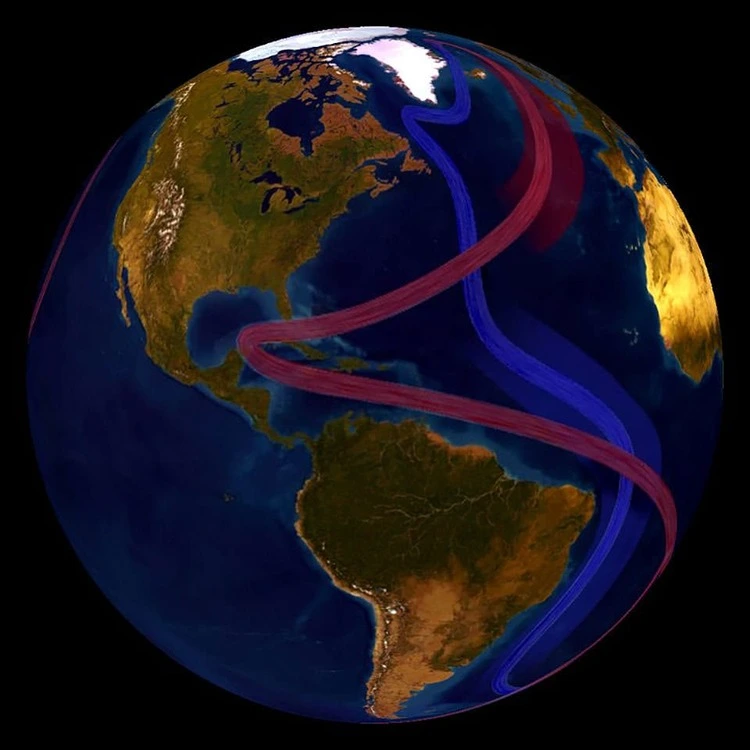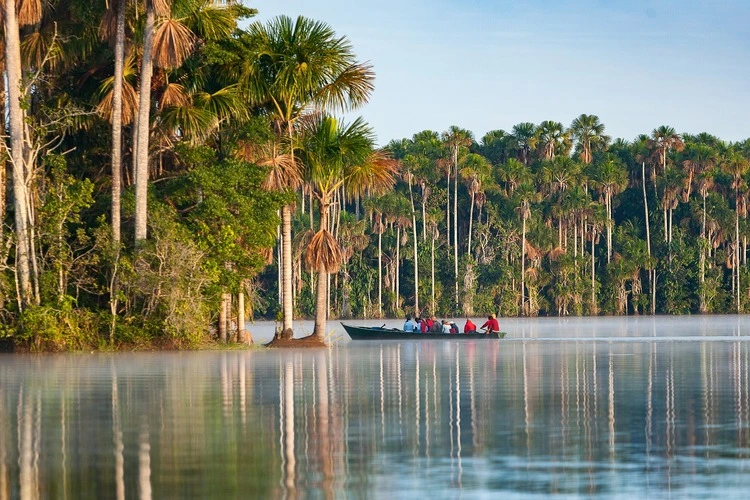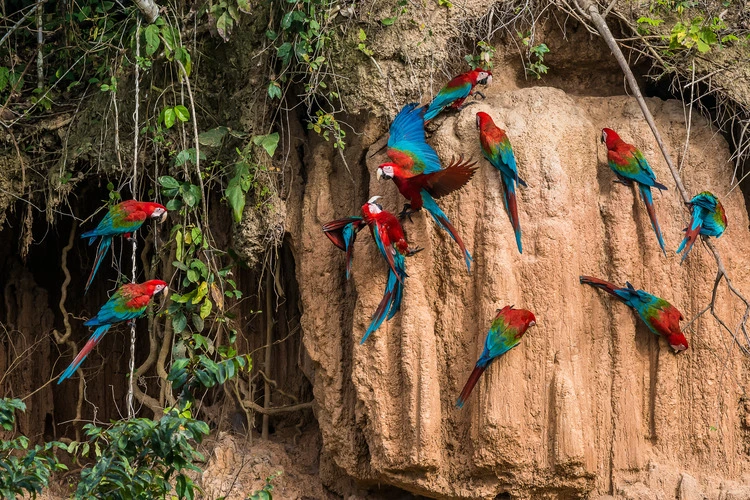
Discover how the Amazon and AMOC are closely tied – and what an AMOC collapse would mean for the world’s largest rainforest
By
What do an ocean current and a rainforest have to do with one another? The answer: surprisingly a lot.
Although they may seem unrelated, the Atlantic Meridional Overturning Circulation – or AMOC as it is abbreviated to – is a vast ocean current that transports water across the world, which researchers have recently consolidated is interconnected to the largest rainforest in the world, the Amazon.
These two systems are both classed as ‘tipping points’ which influence one another, and can trigger chain reactions or cascades.

With the news earlier this month of scientists seeking urgent action for the weakening AMOC ocean circulation in the Atlantic – describing the ‘devastating’ and ‘irreversible’ effects that it would have across the world if it collapsed – the potential repercussions are clear.
The same applies to the Amazon rainforest – home to 9 per cent of the world’s mammals, 14 per cent of birds, 8 per cent of amphibians, 13 per cent of freshwater fish and 22 per cent of vascular plant species.
Unparalleled for its biodiversity, the potential demise of such an important hub of wildlife and ecosystems would lead to many knock-on effects including losing the planet’s largest producer of oxygen.
Enjoying this article? Check out our related reads:
So, what is the relationship between the Amazon and the AMOC – and how do they interact? The bigger question, too: what would happen to the Amazon if the AMOC were to collapse?
The relationship between AMOC and Amazon
If the planet were to continue to warm on the same trajectory as it is currently, the AMOC could be weakened. This would slow down the AMOC or ‘global conveyor belt’ – dubbed for its ability to transport sediment, organisms and heat across vast distances – and change the temperature distribution within the Atlantic.
These temperature changes would affect the atmospheric water cycle of the planet, and consequently the patterns and quantities of rainfall – all significant for the Amazon rainforest.
Changing vegetation
The impact of marine circulation upon the Amazon has not, until now, been studied extensively. But in recent research published this month on the AMOC and Amazon, scientists established a relationship between the two.
By analysing a marine sediment core from the Amazon River for pollen and carbon residues over the last 25,000 years, scientists found when the AMOC was drastically weakened, vegetation changed in the Amazon. A dramatic decline was discovered in rainforest vegetation in the northern part of the Amazon when the AMOC’s strength declined.

Historical rainfall patterns varied due to the AMOC weakening, and the Amazon ecosystem was able to adapt accordingly back then.
But research suggests this may not be the case for the modern-day rainforest. Coupled with the effects of deforestation, the stability of the Amazon may be threatened by the event of a modern-day collapsing AMOC. If it did collapse, models suggest that Amazon vegetation would be affected in a similar way to how it did during the Ice Age.
Bad news – and good?
Strangely, consequences of an AMOC collapse for the Amazon are paradoxical.
While much of the world would see immediate devastating impacts – like a drop of 10-15C in Europe, or rising sea levels and flooding on the US’s East Coast – an AMOC collapse may actually temporarily delay some of the issues that the Amazon is currently facing if coupled with the effects of global warming.

In the initial phases of an AMOC slowdown, greater rainfall and lower temperatures in the Amazon could partially offset any temperature-driven stressors that the rainforest vegetation experiences, delaying the potential for the Amazon to transition into a savanna-like state.
Still, this would only be for a temporary amount of time and also depends on the relative timing between an AMOC collapse and global warming. If global warming worsened past a particular threshold before an AMOC collapse, the rainforest could irreversibly enter a savanna-like state.
Also, if global warming did go past threshold levels, relying on the cooling effect of an AMOC collapse would be unfeasible: the overall effect would not be strong enough to counter forest dieback and any consequent loss of biodiversity.
Due to these fluctuations in the AMOC, the Amazon could shifts its seasons – with the dry season becoming wet and vice versa – a change that would severely impact the overall ecosystem.
The relationship between the AMOC and Amazon shows just how interconnected our planet is. The long-distance influences of one system to another also highlights how those with minimal responsibility for causing climate change must face the consequences of a warming planet.
Ultimately, limiting global temperatures is still the aim in order to preserve both the Amazon and the AMOC, rather than relying on the potential short-term benefits that may occur due to an AMOC collapse.




